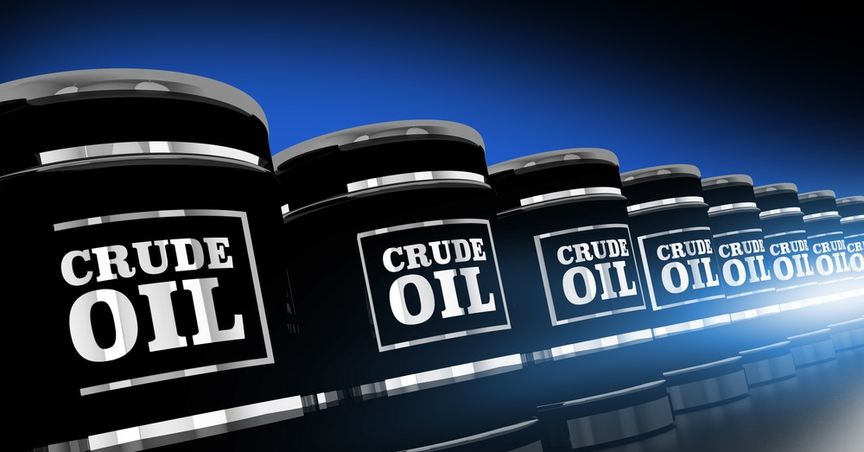Summary
- International commodity trade has seen massive disruption due to the Covid-19
- Precious metal Gold has seen very high demand and price movement in the past few months
- Crude Oil prices have shown a very volatile trend since the outbreak of the Coronavirus
- Iron ore prices even prior to the onset of the pandemic were weak on account of the cyclical slowdown in the Chinese economy
The rapid spread of the coronavirus pandemic led to a massive disruption of international trade. During the first quarter of 2020 exports of G20 countries fell by as much as 4.3 per cent compared to that of the fourth quarter of 2019, while imports fell by 3.9 per cent during the same period. The situation became even more precarious when lockdowns were imposed across many countries, with the imposition of the lockdowns in March a greater fall was witnessed in their import and export figures.
On the side of important internationally traded commodities also huge fluctuations were witnessed, marred by an unprecedented drop in demand as well as logistical considerations. Below we look at five important internationally traded commodities and how they have fared during the coronavirus crisis.
- Gold – Gold has seen very high demand and price movement in the past few months. Its prices have been growing consistently during over the last many months except for a minor hiccup in the month of March when lockdowns were imposed in many parts of the world. In the past one month the prices of gold have increased by more than 1.3 per cent, and in the past six months period it has increased by nearly 15.61 per cent with the precious metal still going strong, as the world continues to be ravaged by the pandemic, and prices of other important internationally traded commodities plummeting. On 2nd of January 2020 gold was reported at $1471.87 per ounce while currently, it is hovering at around $1770.65 per ounce.
- Crude Oil – Unprecedented demand and price volatility has been witnessed in crude oil since the outbreak of the coronavirus. First, when the disease broke out, there was a massive fall in working of the manufacturing and the transportation sector, two of the major consumers of Crude oil. This led to a massive fall in its demand and consequently in its prices, which necessitated an urgent meeting to be called by the OPEC to initiate an immediate production cut to curb the price crash. The meeting, however, was not all harmonious leading to a fallout between Russia and Saudi Arabia over an individual share of production cuts, which led Saudi Arabia to significantly increase its supply in the international market and also to significantly reduce its official prices.
The consequence was a bloodbath in the crude oil market as prices crashed to unprecedented lows. Finally, a parley between both the warring parties was brokered by the United States, which led to the stabilization of prices. However, this was not the only shocking event that have weighed down the crude markets during the past few months. The WTI Futures at one time started to trade in the negative territory, over storage space concerns in the United States of America. A situation never heard before of and putting the fortunes of several small and medium crude producers around the world at risk. The situation was, however contained after assurances were given that there was adequate storage space available.
WTI Crude traded at $63.27 per barrel on 5th January 2020 when the prices started sliding down, on 20th April a sudden drop in prices was witnessed with prices plummeting to $-37.63 per barrel, on 23rd of April the prices made a sharp recovery to reach a level of $16.5 per barrel and since then the price of the commodity has constantly been improving to be currently trading at $38.49 per barrel.
- Copper – Copper is another important industrial metal which has risen to significance in recent years due to the rise of lithium-ion technology and its application in electric vehicles. Since the news of the outbreak of the Coronavirus in the month of January, the prices of copper plummeted in the international markets when it reached a low of $2,53 per pound on 3rd February 2020. China which is one of the biggest consumers of the commodity, was virtually shut during that period as authorities were trying hard to contain the spread of the virus. The second wave of a plunge in commodity prices occurred around the mid of March when its prices touched a level of $2.08 per pound on 23rd May 2020 when the coronavirus disease was declared as a global pandemic and several countries either imposed a complete or a partial lockdown. Since then, however, the price of the commodity has constantly been rising and have already reached mid-January levels and are currently trading at $2.66 per pound.
- Iron Ore – The behavior of iron ore prices, however, has been somewhat dramatic during the pandemic. Iron ore is an important internationally traded commodity, with China being its largest consumer. Even prior to the onset of the pandemic, the international prices of this commodity were weak on account of the cyclical slowdown in the Chinese economy just ahead of the pandemic. Since July 2019, the international prices of the commodity have been falling from $ 109 per ton to a low of $93 per ton towards the last week of January 2020 when lockdowns were initiated in China. Since January 22 there was a sharp drop in prices of the commodity to reach a low of $82 per ton on 3rd of February before climbing again up to $89 per ton on 19th There was a second price drop after that on 1st of April when prices touched $83 per ton after which they have been steadily climbing to have reached a current level of $103.23 per ton.
- Sugar – Sugar as an important internationally traded commodity has suffered severely because of the coronavirus pandemic. The price of the commodity fell from a high of 15,40 US cents per pound on 21 February 2020 to a low of 9.16 US cents per pound on 27th April 2020. Since then however the prices of the commodity has constantly been rising and currently has reached a level of 11.55 US cents per pound.
The prices of all these major commodities have seen a recovery in the past one month only. It is not surprising that these prices recoveries have coincided with many of the world economies gradually opening up during that time. The next few months could very well see the prices of these commodities continuing the momentum unless we are faced with a resurgence of the virus.



